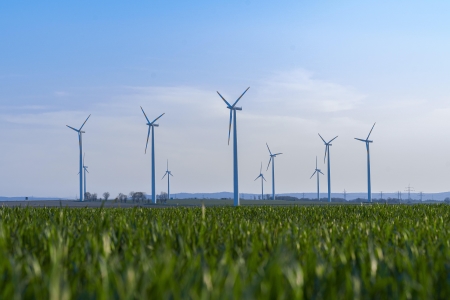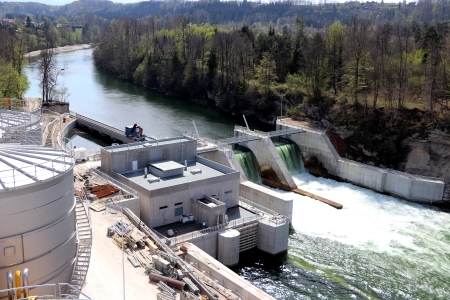
- Company
- Services
- Fields of Expertise
- Publications
- References
- Contact
- EN DE

A large part of our energy demand is provided by fossil fuels. In 2020, the global primary energy demand was 565 exajoules and every year this demand is increasing. The use of fossil fuels such as coal or natural gas results in the release of greenhouse gases such as CO2 into the atmosphere, driving climate change and thus posing a lasting threat to life on Earth. Renewable energy sources are used to counteract climate change. Renewable energy sources include bioenergy, hydropower, geothermal energy, wind energy and solar energy, with the last two in particular representing important technologies for the transformation towards a sustainable power supply.
Solar energy is used in the form of solar thermal and photovoltaic systems. In solar thermal systems, such as the Concentrated Solar Power system, direct solar radiation is reflected by mirrors onto a receiver that absorbs the concentrated solar radiation and transfers it to a heat transfer fluid, such as thermal oil. Subsequently, the heat extracted from the solar field can be used to drive a power generation process such as a steam cycle, or it can be stored in a thermal energy storage (TES) system.
Photovoltaic systems, on the other hand, convert solar irradiation directly into electrical energy through the photoelectric effect. The conversion takes place with the help of silicon solar cells and enables a direct use of solar energy in the form of electricity. This application possibility can also be realized in solar parks in order to use possible fallow areas.
 Wind turbines use the kinetic energy of the wind to generate electricity. The kinetic energy is converted into electricity with the help of a generator. Wind turbines can be operated both offshore and onshore and are an important factor in the fight against climate change.
Wind turbines use the kinetic energy of the wind to generate electricity. The kinetic energy is converted into electricity with the help of a generator. Wind turbines can be operated both offshore and onshore and are an important factor in the fight against climate change.
In order to be able to cushion the volatility of wind and solar energy, energy storage systems are of enormous importance for a stable energy supply. Energy storage systems can be divided into thermal, chemical, electrical and mechanical storage systems. Pumped-storage, porous-storage and cavern-storage systems are particularly important for the long-term storage of large amounts of energy. For short-term storage, battery storage systems as well as sensible and latent heat storage systems are used. In the case of energy storage systems, however, it should not be forgotten that, depending on the storage system, a high space requirement and a high consumption of raw materials must be taken into account.
 The use of renewable energies is an essential pillar on the way to a sustainable future in order to ensure an environment worth living in for future generations. The challenges here are great. The security of energy supply is central to this and must be ensured by suitably interconnecting all sustainable energy sources with energy storage systems. Especially for energy-intensive industries, such as the steel industry or plants for seawater desalination, this linking of sustainable energy systems and energy storage is of high importance to ensure stable and economic operation. To achieve these goals, individual, site-specific solutions must be developed to meet specific needs.
The use of renewable energies is an essential pillar on the way to a sustainable future in order to ensure an environment worth living in for future generations. The challenges here are great. The security of energy supply is central to this and must be ensured by suitably interconnecting all sustainable energy sources with energy storage systems. Especially for energy-intensive industries, such as the steel industry or plants for seawater desalination, this linking of sustainable energy systems and energy storage is of high importance to ensure stable and economic operation. To achieve these goals, individual, site-specific solutions must be developed to meet specific needs.